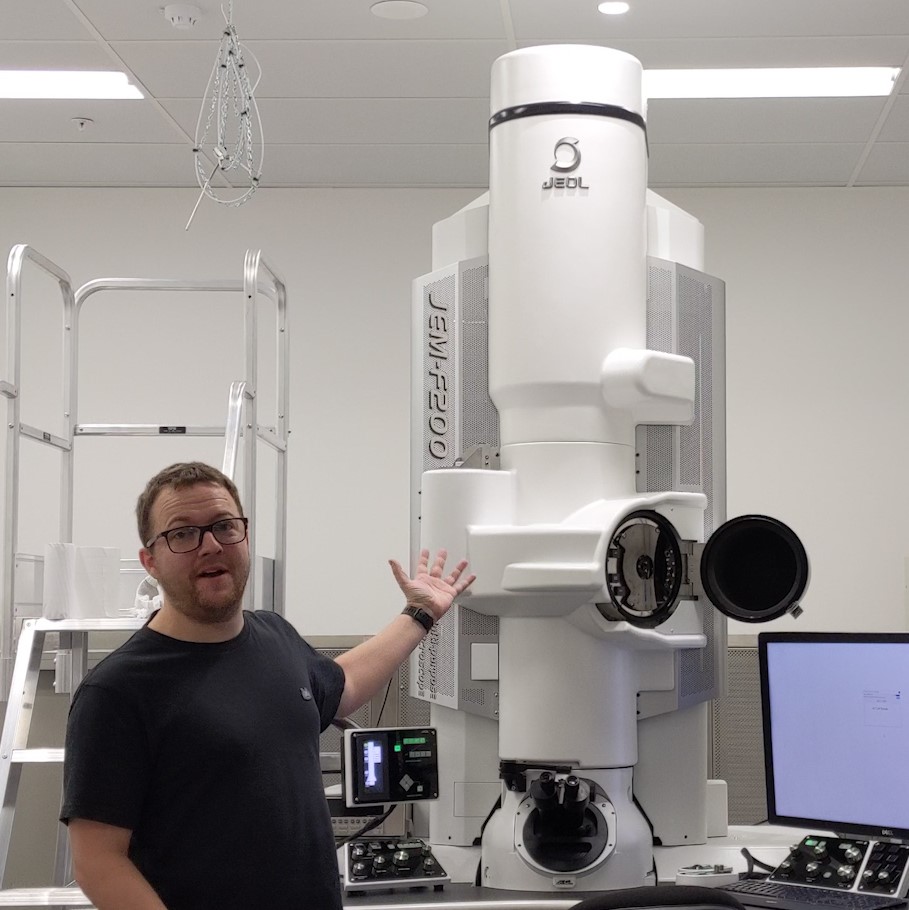
Keywords
Fields of Research (FoR)
Nanoscale Characterisation, Condensed Matter Characterisation Technique Development, Functional Materials, Condensed Matter Physics - Structural PropertiesSEO tags
Biography
Richard Webster holds a PhD from the University of Bristol in Physics and is employed as a research associate in the Electron Microscope Unit at UNSW, Sydney - a Node of Microscopy Australia. Richard has over 10 years experience using transmission electron microscopes and has over 50 peer-reviewed publications regarding TEM application to an extensive range of materials. Richard’s role in the unit is to collaborate with researchers applying...view more
Richard Webster holds a PhD from the University of Bristol in Physics and is employed as a research associate in the Electron Microscope Unit at UNSW, Sydney - a Node of Microscopy Australia. Richard has over 10 years experience using transmission electron microscopes and has over 50 peer-reviewed publications regarding TEM application to an extensive range of materials. Richard’s role in the unit is to collaborate with researchers applying the latest microscopy techniques to enhance their research and answer their scientific questions and to teach researchers to use TEM. Richard is responsible for the two JEOL F200 microscopes and daily operation of the aberration corrected (S)TEM, the JEOL GrandARM300F2.
My Grants
RIS 2018 - insitu gas & heating holder for the JEOL F200 TEM.
My Qualifications
2015 PhD (Physics), University of Bristol, UK
2011 MSci (Physics), University of Bristol, UK
My Research Activities
My research at UNSW has expanded from semi-conductor growth mechanisms to a more interdisciplinary materials outlook reflecting my role in MWAC. My research still has a materials focus and but can be categorised into three categories: “Electronic Materials”, “Materials for Catalysis” and “Metallurgy and Additive Manufacturing” as outlined below.
Materials for Catalysis and Energy Storage
Catalytic materials are scaling downward as this reduces the amount of costly previous metals and exposes more surface area, with the trend increasingly towards single atoms catalysts. Characterisation of surface properties such as facet growth, strain and the interfaces and interactions of active catalytic species is critical to a deeper understanding of the underlying catalysis process and mechanism. I apply my skills and experience in TEM to develop protocols and procedures to image and characterise single atoms on multiple substrates and to characterise the shape, morphology and atomic structure of nanoparticles.
 Electronic Materials
Electronic Materials
This research focus builds on my background in solid state physics – namely nitride semiconductors. I am able to apply this foundational knowledge of materials and the relationships between micro-/nano-structure and their electronic properties. Using advanced TEM imaging and spectroscopy techniques such as electron energy loss spectroscopy (EELS) and X-ray energy dispersive spectroscopy (XEDS) I make significant contributions the development and application of solar, ferroelectric and semiconductor materials research.
 Metallurgy and Additive Manufacturing
Metallurgy and Additive Manufacturing
Metals are at the heart of all major infrastructure and designing modern metals and alloys for advanced applications requires a deep understanding of the microstructural here I bring my expert knowledge of electron diffraction and advanced imaging techniques to characterise Strain, structure, and across a range of alloy systems (steels, Nickel super alloys and novel Aluminium alloys) to analyse dislocation structure, growth mechanisms, precipitate formation and ultimately to correlate these atomic with material’s macro properties.
Location
Electron Microscope Unit,
Mark Wainwright Analytical Centre,
UNSW, Sydney,
NSW, 2052, Australia
Map reference (Google map)